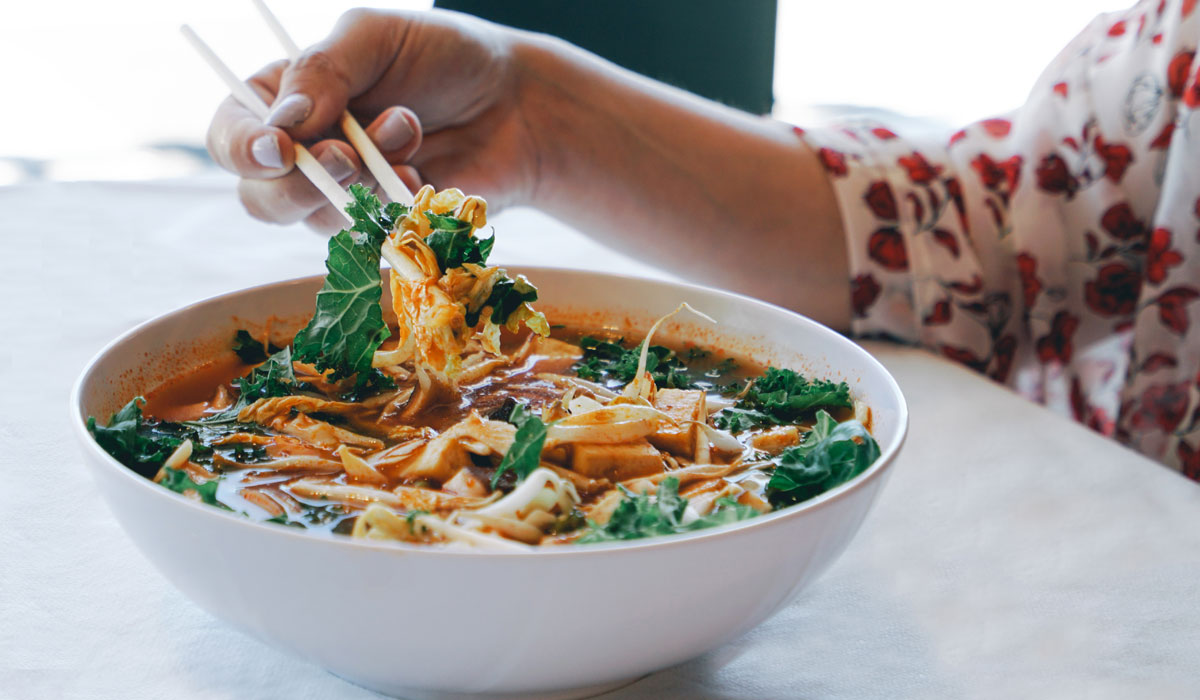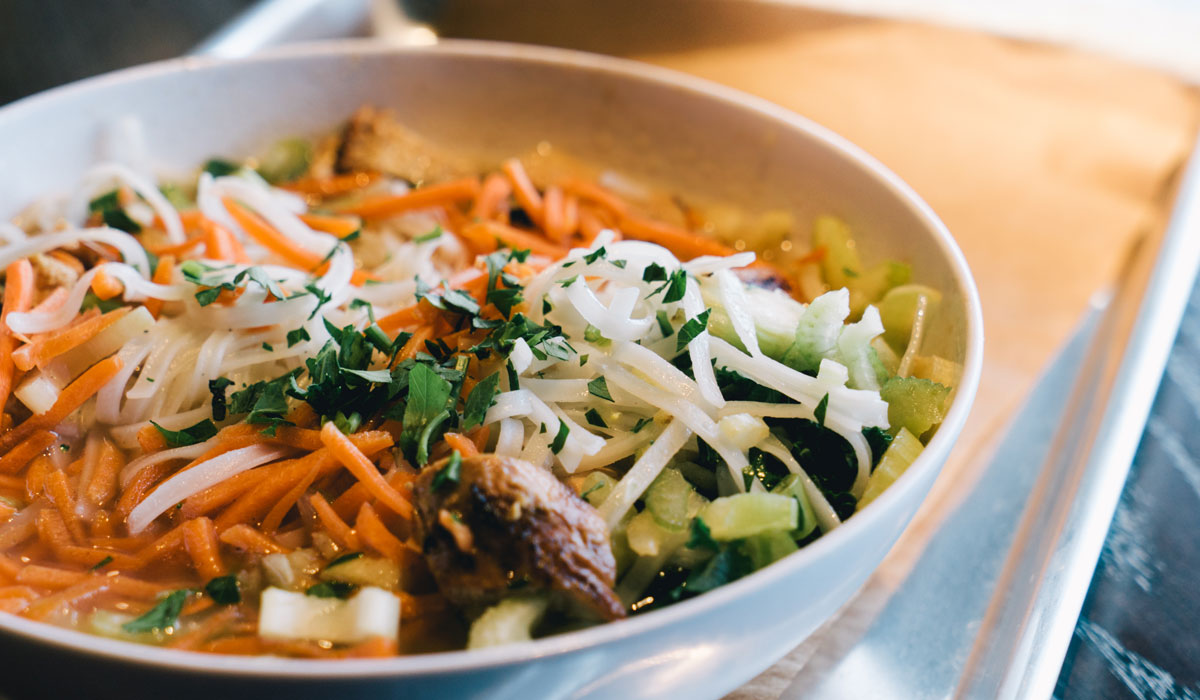CoreLife Eatery beats to its own drum. Brand president and chief concept officer Scott Davis laughs at one example. “I was joking with [founder Todd Mansfield] that we’re probably the only restaurant company I can think of that would do anything to promote fasting,” he says.
Davis is referencing the fast casual’s “CoreLife Challenge,” a 21-day food journey inspired by customers. This past year, with help from ambassador and future franchisee Tim Tebow, CoreLife engaged a record 20,000 participants. There were about 6,000 in 2017.
This kind of growth is part of the 4-year-old chain’s everyday narrative lately. CoreLife upped its number of locations by roughly double last year, which lifted revenue 133 percent.
There are now 55 stores with 65 total expected by year’s end, and another 25 or so on deck for 2020. In the next five years, CoreLife believes it will hit 300 restaurants, including corporate and franchised growth. The latter model is what’s fueling CoreLife’s ascension, Davis says. Currently, the split is about 50/50, but the direction has flipped from a corporate-heavy focus in the early days. Davis says CoreLife wanted to have a base of stores to build on so it could understand its evolution from the trenches, and then react. And now, it’s matured to the point where the first couple waves of CoreLife’s franchise groups are into their second and third stores. That internal expansion will continue, Davis says, as will onboarding new operators into the mix for next year and beyond.
CoreLife’s decision to accelerating franchising wasn’t reactionary. The method was in its DNA. CoreLife was founded in Syracuse, New York, in 2015 by a small team of experienced franchised experts who had the same vision many entrepreneurs do—take what they’ve seen from years of work and make it better. In this case, develop a more effective system to bring healthy food nationwide.
Mansfield was joined by Larry Wilson (now CEO) and John Caveny. Wilson operated 25 Moe’s Southwest Grills as well as Hoopla franchise froyo shops. Caveny founded Jo-Li-Me café—the restaurant CoreLife converted into its first eatery. Mansfield, a partner with the company, spent decades practicing physical therapy and functional medicine.
Naturally, CoreLife isn’t the first health-focused chain looking to bring quality food to the masses. But the brand has gone about it different than most. You look at CoreLife and its bone broth bowls, “power plates,” and figure it must reside in Manhattan or LA. Actually, it’s avoided the big urban areas, electing instead for suburban, secondary markets. Places like Vestal, New York; Strongsville, Ohio; and Sandy Utah. (Check out the full list here).
What that accomplishes right out of the gate, Davis says, is to make CoreLife one of the first players in its space when it lands. It isn’t fighting for share with 20 other grain-bowl concepts on the same city block. It’s more akin to how Panera Bread drew its real estate path to 2,300 locations. Davis knows the model well. He was Panera’s chief concept officer from its inception in 1996 until December 2015, and a confidant of former CEO Ron Shaich.
More mainstream brands, like Panera and Chipotle, are the marketplace and competitive set Davis sees CoreLife competing with. Not the food halls and downtown, flashy concepts.
“That’s certainly differentiating,” he says. “We’re going to a different audience in a different space.”

The road from there to 300 calls for rapid, concentric expansion that leverages CoreLife’s growing name recognition. It’s something the concept invested heavy in from the outset, with market and real estate research and infrastructure, including personnel and online tools and materials.
As for the product itself, CoreLife has evolved in preparation for a broad push. It’s gone from a very niche, grain-bowl, kale salad, kind of brand, to one that spreads out with accessibility and familiarity in mind.
An upcoming choose-two program. More sides geared toward dinner. A heavy focus on clean proteins, prepared in-store on a live grill. “We’ve seen an evolution in how people eat healthy,” Davis says. “I think a few years ago it was very pointed in one specific direction for a lot of folks. But what we’re seeing now is a much broader sense of what works for every person. There are a lot of different ways to get there.”
CoreLife just rolled out catering a few months ago. It’s considering an $8.45 choose two price point for any small bowl option, and balancing make-your-own items with curated ones, especially on the bone broth side, to help people get introduced to its menu.
Because of the suburban focus, CoreLife does about 55 percent of its business for lunch and 45 percent dinner. For comparison, more than 75 percent of Panera’s sales take place post-11 a.m., but dinner only accounts for roughly a quarter to a third.
“Our big mission right now is looking at how do we make this concept more accessible to more people,” Davis says. “We think it’s sort of like being the Planet Fitness of the health concepts. We don’t want to be the highest end or fanciest one. We want to be the one that everyone can go to. That works for them. Makes a difference.”
Part of that is the price. Average check at dinner is $12. Davis says CoreLife has been able to live in the $5.95–$12.95 range because it’s avoided opening in major markets. It’s also making everything in-house and buying source ingredients. There are no freezers or microwaves. All foods are free of trans fats, artificial colors, sweeteners, other artificial additives and GMOs. The chicken and steak used are sustainably raised and never given antibiotics or hormones, and the bone broth is slow-simmered all day.
The small-market approach has paid off in other ways, too. CoreLife’s local-store marketing doesn’t require any hard-selling. The brand goes right to what Davis calls “the influencers of health and wellness” in its communities. Leaders meet with gym owners, yoga studio heads, medical professionals. And these people are more than willing to relate to the brand’s values, especially considering there isn’t much to compare with.
“We just help them understand what our menu is, what our philosophy is, where we come from,” Davis says. “And that ultimately we want them to be our best customers.”
Close to opening, CoreLife hosts VIP events and brings influencers in. It opens Facebook up and tries to create a following of 6,000 or so followers before the doors open. And again, CoreLife becomes a destination restaurant when it drops into these markets.
“For us, it’s not just about being another restaurant brand,” Davis said. “We really want to help people figure this [eating healthy] thing out. We found ourselves that eating food and having a slightly healthy lifestyle really can make a huge difference without a whole lot of effort. The food does the work.”

The challenge
Davis knows CoreLife’s 21-day challenge works because he did it himself. Since last year’s event, he’s down about 40 pounds.
The idea started organically, he says, with Mansfield as the architect. Davis was a bit hesitant at first because he wasn’t sure about a restaurant company doling out health advice. But as more stores opened, feedback flooded in. People who have lost 20, 30 pounds in a couple of months. Things of that nature. “It was coming in, every location we opened,” Davis says. “It happened so often we thought maybe it’s happening even more than we know.”
Organizing something official was really about becoming a resource for customers, he adds. Being able to guide them through the bad days to the other side.
CoreLife created meal bundles and introduced, this year, the idea of intermittent fasting, along with diet and exercise plans. It launched an entire marketing effort around gathering and sharing customers’ success stores. Tebow, a former Heisman Trophy winner, recorded videos giving positive affirmations to guests and CoreLife used his commitment to living a healthy lifestyle to encourage others.
Basically, it’s a step-by-step calendar that sparked a community in the process. Here’s a look at what it entails.
CoreLife has refined the challenge over the past three years. The 2019 edition was the first time it offered a meal bundle that gave discounts to diners willing to try. They could purchase the bundle and eat in-store or take it home.
“For us, development of the meal bundles solved the challenge of ‘How can we help’ rather than ‘What’s in it for us,’” Mansfield wrote in a QSR piece.
He noted that 91 percent of its participants this year said they would do it again. Hundreds of testimonials came in saying they were sleeping better, cholesterol was down, and other positive outcomes. Positively for CoreLife, much of the sharing popped up on social channels. When someone signed up for the challenge, they were given the option to also join CoreLife’s Facebook page to swap ideas and talk about milestones with other participants.
Mansfield said about 10 percent of the people opted in for the Facebook element. “What was more encouraging was that our members started to advocate on our behalf and for our brand,” he said. “As they became more vocal, we became more silent. This was because we no longer had to defend ourselves if a customer was frustrated waiting for food or service. Our customers were coming to our defense for us.”
The challenge began with an employee who sent CoreLife a note saying he thought the brand could change his life. Coreife offered to pay for his food for a month. Twenty-seven months later, he had dropped 227 pounds.
For his part, Davis says, he’s at a better weight now than when he was a high school freshman. “It’s crazy,” he says.
“One of the first things we do is talk to people about what’s your why. Why do you want to do this? Why do you want to engage in a lifestyle change?” he says. “It really gets people connected.”




